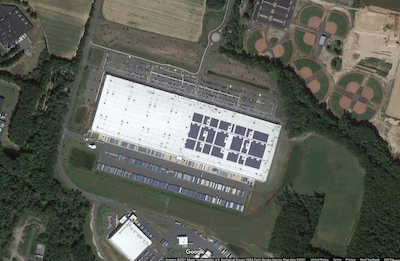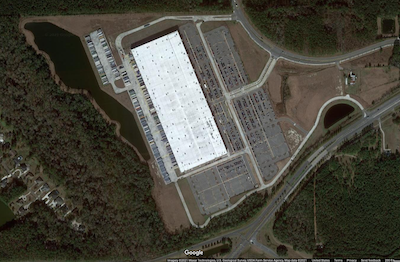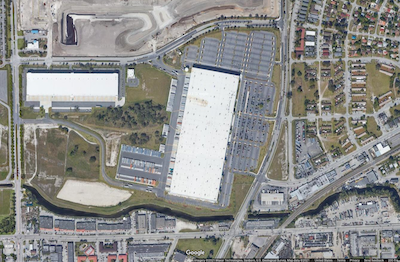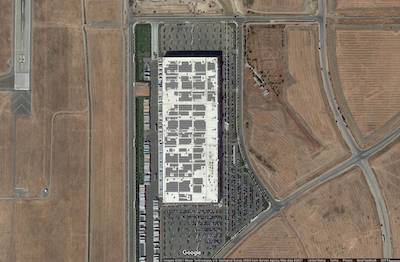The Landscapes of Logistics
“For well over two decades, the Nueva Esperanza informal settlement has occupied a narrow stretch along a creek on the east side of Tijuana, Mexico. Irregular structures line the neighborhood’s compacted dirt roads, leaning this way and that, some appearing to be as tall as three stories and seemingly cobbled together out of scrap wood, cardboard, tarpaulins, and sheet metal. The neighborhood is home to migrants from other parts of Mexico who travel to Tijuana searching for jobs. However, in Nueva Esperanza, they also find the challenges of poverty, crime, and addiction typical of urban informal settlements. Starting in August 2021, these migrants also encounter a 32,000-square-meter Amazon fulfillment center on the southeastern boundary of the settlement. This warehouse is situated in Nueva Esperanza to expand the company’s delivery system within Mexico. The grey warehouse block, coded TIJ1 by the company, has the corporation’s familiar “a to z” logo emblazoned at each corner and stands in sharp contrast to the surrounding informal dwellings. This juxtaposition highlights not only the vast differences in the size, scale, materiality, and quality of the structures but also the profound social inequalities pervasive in capitalist production.
TIJ1 is but the latest installation in Amazon’s vast global logistics network, an array of fulfillment and sortation centers, airport hubs, and delivery stations connected by shipping ports, interstate highways, and regional airfields, and supported by a massive reserve of delivery drivers who traverse the last mile of the fulfillment system to bring packages to customers’ doorsteps. This logistics system builds upon the “just in time” mode of production that replaced earlier Fordist models by extending the techniques of production beyond the warehouse. However, effectively minimizing the literal and figurative grounds between the inventory and the consumer, from warehouse to doorstep, requires even more infrastructure to simplify the process further, making the logistics network its own technical production. Remote, delimited, highly secured, and opaque, these landscapes of logistics are at once hidden and in full view. A decentralized network of buildings, roads, flights paths, and service vans, these technical lands do more than service the fulfillment of Amazon’s e-commerce orders; these nodes and networks are technologically productive landscapes that also serve an ideological purpose.
The aim here is twofold: first, to theorize the ideological function of the technical lands of logistics; second, to engage in a detailed verbal and aesthetic visualization of the territories and forms of labor rendered invisible by these technical lands. This foregrounding of landscape ideology and the visualization of its territories is one possible avenue towards reclaiming and recovering technical lands from the regimes of invisibility that envelop them.”





